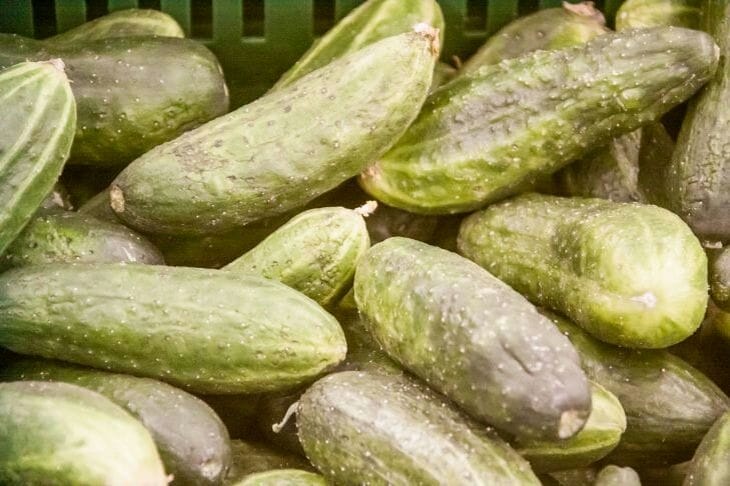This Forbidden Method of Watering Cucumbers Will Increase the Yield by 3 Times – Check It Out Yourself
What if someone told you that ice water is the secret to a super cucumber harvest? It sounds crazy, but this is the method that large agricultural companies have been hiding for decades.
The point is to water the plants with cold water (+10...+12°C) strictly after sunset.
Why does this work?
Cold causes stress, forcing roots to search for food more actively and strengthening their structure. A 1987 study published in the journal "Vegetable Growing" proved that such watering increases the yield by 200-250% for varieties with a powerful root system, such as "Nezhinsky" or "Konkurent".
Petr Sidorov from Rostov-on-Don conducted his own experiment: “I used to collect 5-7 kg from a bush, but after “ice” watering – all 15! The cucumbers were even, without bitterness.”
But there are some nuances here. The method only works when the daytime temperature is above +25°C and the soil moisture is at least 60%. If it is colder than +15°C at night, the roots may become overcooled and rot.

Renowned agronomist Gennady Morozov recommends combining the method with ash fertilizing in the podcast "Harvest Beds": "Cold water + ash infusion is an explosive tandem for growth. Ash neutralizes stress from temperature changes and adds potassium, which is critical for the formation of ovaries."
Scientific justification
Cold water stimulates the production of abscisic acid, a hormone that “awakens” dormant root hairs.
Professor of the Department of Plant Physiology at the Timiryazev Russian State Agrarian University Olga Semenova explains: “The roots begin to actively absorb microelements, especially silicon and boron, which are responsible for the density of the fruit and resistance to disease.”
However, such stress is only useful for adult plants (from 3-4 true leaves). Young seedlings can die even from short-term hypothermia.
Historical background
In pre-revolutionary Russia, farmers watered cucumbers with well water even in hot weather, achieving record harvests. Modern research explains this phenomenon by the activation of cytokinin synthesis, hormones responsible for the formation of ovaries. In the 1930s, Soviet collective farms experimented with ice water to increase crop yields in the arid regions of Kazakhstan, but the method was banned due to the risk of mass plant death if used incorrectly.
Practical recommendations
- Temperature control. Use a water thermometer – the ideal range is +10-12°C. If the water is too cold (+5°C and below), add 1-2 liters of warm water.
- Watering time: Only after the sun has completely set, to avoid evaporation and sudden cooling of the soil.
- Frequency: No more than 2 times a week during the period of active fruiting.
- Champion varieties. Old varieties (Muromsky, Vyaznikovsky) and hybrids labeled "F1 cold-resistant" respond best.
Risks and Alternatives
If your region is famous for cool nights, try a “soft” version of the method: watering with water at +15°C with the addition of 3 drops of iodine per 10 liters. This will give a similar stress effect, but is safer for the roots. Avoid this method on clay soils – cold water provokes moisture stagnation and rotting.
A farmer from Krasnodar Krai, Ivan Kolesnikov, shared in the magazine “Dacha i Urozhaya”: “I watered cucumbers at night with water from an artesian well (+9°C). I collected 200 kg from 10 bushes! But once I made a mistake with the temperature – I lost a third of the plantings. Now I always check with a thermometer.”
Modern research
In 2021, Wageningen University (Netherlands) confirmed that short-term cooling of cucumber roots increases the sugar content in the fruit by 15%. But scientists warn that the method requires precise control of humidity and temperature. For greenhouse conditions, they have developed an analogue - "cold injections": supplying cooled water directly to the roots through drip irrigation.
This method is not magic, but a game with plant physiology. If you are willing to take risks and carefully follow the rules, the cucumber harvest will amaze your imagination.
But remember: one wrong move and instead of baskets of fruit you will get dead vines. Start with 1-2 bushes, write down the results in a diary and only then scale up the experiment!
